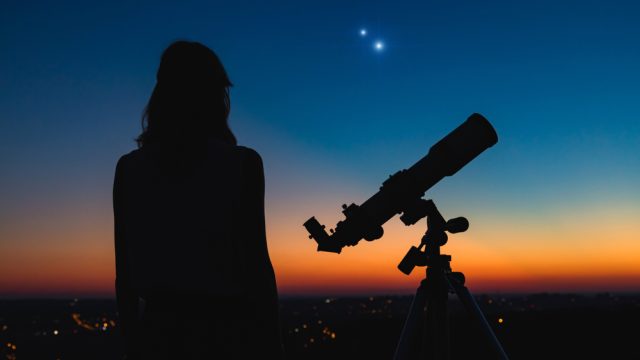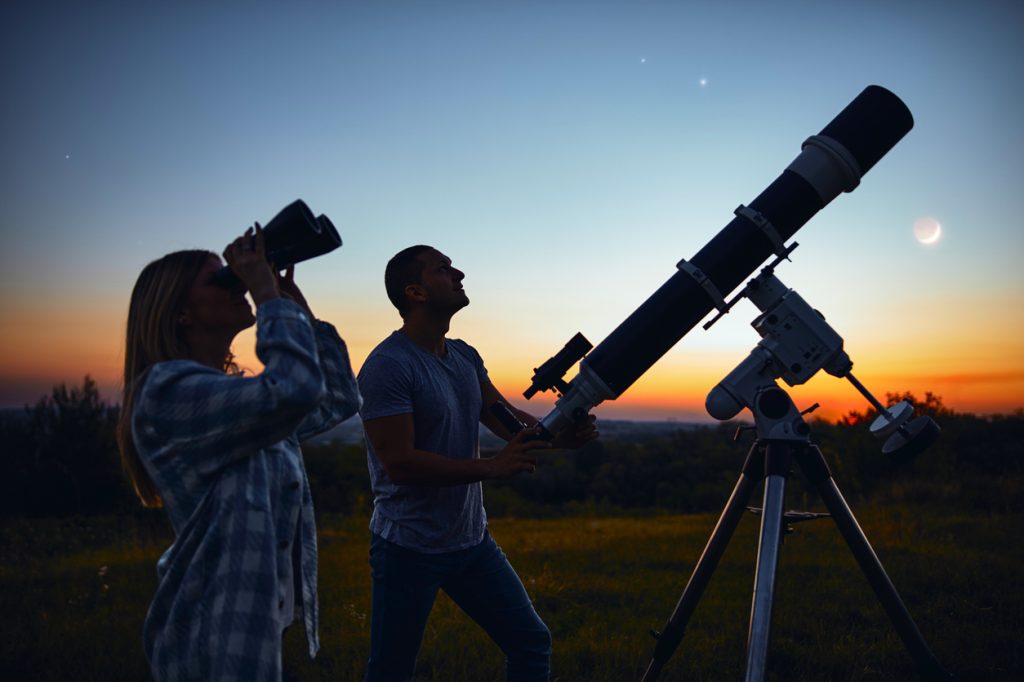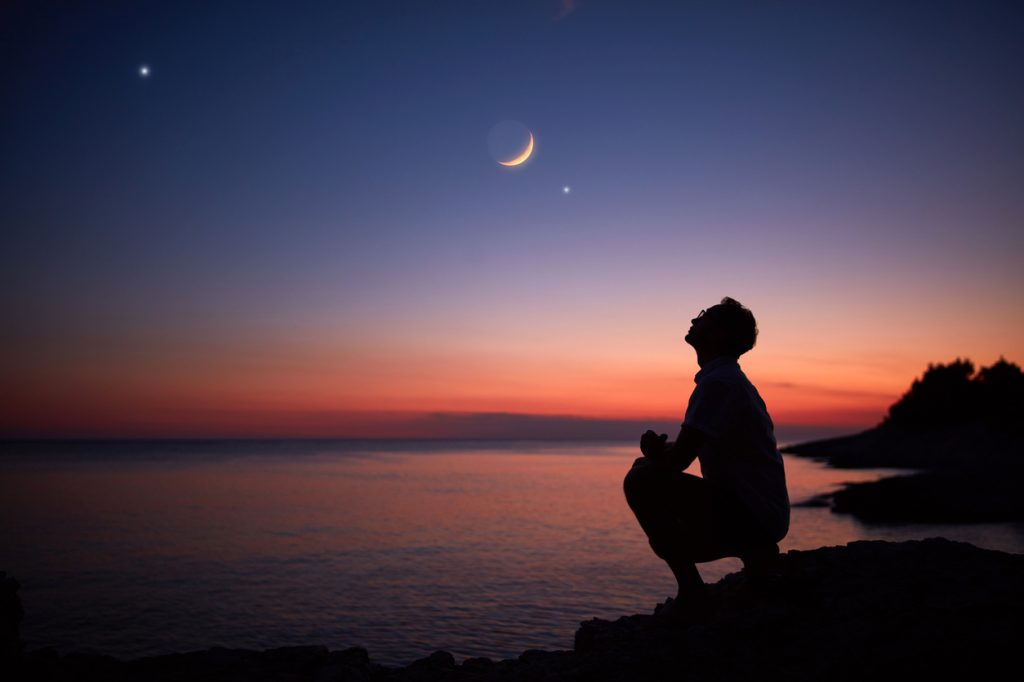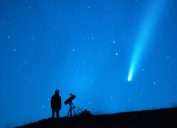Glowing Green Comet Will Be Closest to Earth Tomorrow—How to See It Before It's Gone
The object was only very recently discovered—and won't be back for more than 400 years.

Bearing witness to rare events takes on a whole new meaning when it comes to the night sky. While it can be worth watching on any given evening—especially during annual events like meteor showers—the chance to catch a glimpse of something that may not be visible again within our lifetimes is usually enough to motivate people to get outdoors and look up. And if you're hoping to get in a little more stargazing before the warm summer weather fades, you might want to clear your schedule. That's because a glowing green comet will be visible when it reaches its closest point to Earth tomorrow. Read on to learn how you can see it for yourself before it's gone.
RELATED: A Special Solar Eclipse Will Create a "Ring of Fire" in the U.S.—Here's How to See It.
Scientists recently discovered a new comet in our solar system.

Even though it's our tiny corner of the universe, the vastness of our solar system still makes it surprisingly hard to stay on top of everything that's happening. And it's not just learning more about our neighboring planets and the moon with missions to their surfaces: Scientists also only recently discovered Comet Nishimura, which is currently visible in the night sky.
The passing object has become something of a fascination ever since it was first seen by amateur astronomer Hideo Nishimura while taking photos of the night sky on Aug. 10. And while some scientists initially questioned its ability to survive its approach toward the sun, it has lived up to expectations by putting on a show for stargazers worldwide.
"People get pretty excited because naked-eye comets are not so unusual, but not very common," Quanzhi Ye, a researcher at the University of Maryland who studies comets and asteroids, told The Washington Post. He added that the short timeline from discovery to visibility is "like getting a Christmas present on short notice."
RELATED: 6 Stargazing Secrets, According to Astronomy Experts.
Comet Nishimura will get its closest to Earth on its long journey tomorrow.

Our latest passing visitor has also caused a bit of excitement due to how rare its passage by Earth could be. Scientists have estimated that Comet Nishimura likely has a roughly 430- to 440-year orbit, making this fly-by something of a first-time viewing, CNN reports.
That's because "the last time it passed close to the sun (and might have come closer to Earth) was around the year 1590, before the invention of the telescope," Paul Chodas, PhD, director of NASA's Center for Near Earth Object Studies at the Jet Propulsion Laboratory in California, told CNN in an email. "We don't know whether it got bright enough to be seen with [the] naked eye back then."
The comet will reach another milestone on Sept. 12 when it reaches its closest point with Earth on its journey toward the center of the solar system. It's expected to become even brighter along the way, reaching at least roughly the same brilliance as the North Star—and even if it doesn't stand out like some other close visitors, it will likely still be impressive.
"It'll be exciting. It'll be quite bright. But probably not on the level that it's a comet of the century," Ye told The Post.
RELATED: The Next Total Solar Eclipse Will Be the Last Until 2044, NASA Says.
You won't have long to catch a glimpse of this sporadic visitor.

However, you may not want to put off making plans to look for Comet Nishimura. While the object will likely become its brightest when it reaches its closest point to the center of the solar system on Sept. 18, its path will also make it harder to spot.
"Each day this week, the comet is getting a little closer to the sun, the time window gets narrower, and the comet gets even closer to the horizon," Chodas told CNN. "This will not be an easy comet to see, unless you've observed comets before."
Conditions will also get more challenging as the comet passes Earth, and will likely be more visible from the Southern Hemisphere. "In theory, it might be accessible in the evening sky within a few days after that, but it will still be quite close to the sun in the sky and will be buried in bright twilight," Alan Hale, co-discoverer of Comet Hale-Bopp and founder and president of the Earthrise Institute, told CNN. "Unless it becomes quite a bit brighter than expected, it will likely not be visible."
RELATED: For more up-to-date information, sign up for our daily newsletter.
Here's how you can get the best view of Comet Nishimura.

The comet's fleeting viewing opportunity makes it even more important to set yourself up for success while looking for it in the night sky. Your best chances will involve getting up quite early, using the hour and a half leading up to sunrise to stargaze, Vishnu Reddy, PhD, a planetary scientist at the University of Arizona, told The New York Times.
Besides removing yourself from bright city lights, it's also best to get a clear view of the eastern horizon. Reddy says finding someplace overlooking the ocean, on top of a mountain, or even on a high-rise building can be helpful.
Reddy then suggests looking for Venus just above the horizon once you've found a viewing spot. Comet Nishimura will appear to the lower left of the planet as a streak in the sky. The object won't appear green to the naked eye as it does in photographs, but you can improve your view by bringing along a pair of binoculars. And while it might not be a "giant comet," Reddy adds that you can take pleasure in knowing it won't be back in sight on Earth until sometime around the year 2458.





















